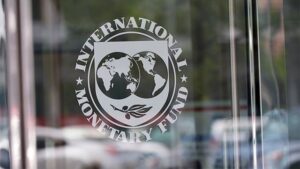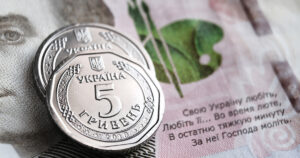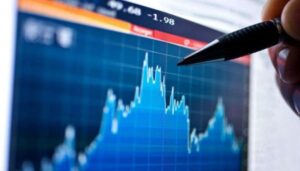
The Congressional Budget Office (CBO) forecasts a significant increase in the US national debt over the next 30 years. According to CBO’s forecast, the national debt will reach 100% of GDP in the current fiscal year and increase to a record 107% of GDP in fiscal year 2029. By 2025, the figure is expected to reach 156% of GDP.
“Rising public debt will slow economic growth, lead to higher interest payments to foreign debt holders, and pose significant risks to budget and economic projections,” the CBO said in its review.
Earlier this week, international rating agency Moody’s warned that import duties imposed by US President Donald Trump could prevent the country from getting its growing budget deficit under control.
The CBO expects the US budget deficit to increase to 7.3% of GDP by 2055 from 6.4% of GDP in 2024. The forecast for 2025 is 6.2% of GDP.
The CBO forecast assumes a slowdown in US economic growth this year to 2.1% from 2.8% in 2024. Earlier, Experts Club and Maksim Urakin released a video analysis of the state of debt in the world, see more details on the YouTube channel: https://youtu.be/gq7twYrWuqE

The International Monetary Fund (IMF) has revised downward its forecast for Ukraine’s economic growth in 2025, lowering it by 0.5 percentage points (p.p.) from the previous forecast to 2-3%, according to a press release from the Fund based on the results of the mission for the seventh review of the Extended Fund Facility (EFF).
“Real GDP growth is estimated at 3.5% in 2024, but is expected to slow to 2-3% in 2025, reflecting unfavorable factors related to labor market constraints, damage to energy infrastructure, and Russia’s ongoing war in Ukraine,” the release said following the staff-level agreement (SLA) on Friday.
Earlier this week, the European Bank for Reconstruction and Development (EBRD) downgraded its forecast for Ukraine’s economic growth in 2025 to 3.5%, while last September it expected it to reach 4.7%.
As reported, the World Bank (WB) in its Global Economic Prospects published on January 17 downgraded its forecast for Ukraine’s GDP growth in 2025 to 2% from 6.5% in the June report, but improved it for 2026 to 7% from 5.1%.
The National Bank of Ukraine also changed its forecasts. Given the security risks and the difficult situation on the labor market, the NBU lowered its real GDP growth forecast for 2025 from 4.1% to 3.6% in late January, while the state budget for 2025 is based on a 2.7% GDP growth forecast.

The real gross domestic product (GDP) of Ukraine in January 2025 grew by 2% compared to January 2024, while in December 2024 the growth was recorded at 1.6% compared to the same period of the previous year, according to the Monthly Economic Monitoring of the Institute for Economic Research and Policy Consulting (IER).
“The main reasons for the accelerated growth are a smaller decline in agriculture, which now reflects only livestock indicators, the absence of massive scheduled power outages, and an increase in private consumption. According to the Ministry of Agrarian Policy, real production in livestock is slightly declining. The number of cattle has declined, while the situation in poultry farming is more favorable. According to IER estimates, real gross value added (GVA) in agriculture decreased by 0.9% year-on-year in January,” the study says.
It is emphasized that the approach of the frontline and the complete closure of mines near Pokrovsk have negatively affected the pace of economic recovery in Ukraine and led to a decline in the mining industry.
At the same time, the situation with iron ore production remains positive. So far, according to the IER, real GVA in the mining industry decreased by 2.9% in January 2025 compared to the same period a year earlier. At the same time, the approaching frontline may have an even more negative impact on the performance of the extractive industry in the coming months.
However, the absence of planned massive power outages had a positive impact on the performance of the manufacturing industry. Domestic demand for the products of industries focused on the domestic market was also favorable. External demand also helped the steel industry. However, the IER notes that the statistical base was high in January. In general, although some industries showed a decrease in output, in the manufacturing industry, real gross domestic product increased by 3% in January (compared to January 2024).
“The destruction of electricity generation by the Russians was not fully compensated by repairs and new generation. In addition, the demand for electricity was lower this year due to warm weather and emergency power outages as a preventive measure during shelling. As a result, according to our estimates, the real GVA in the industry decreased by 5.1% in January (compared to January-2024),” the IER states.
At the same time, in trade, real gross domestic product continues to grow due to higher wages and social payments. Consumption is also growing amid high inflation expectations. In January, the real growth in trade gross domestic product (GDP) slowed to 4.9% (compared to January 2014). At the same time, due to the suspension of Russian gas transit to the EU, real GVA in transport decreased by 1.1% compared to the same period last year.
The IER added that Russia continues to attack Ukraine’s port infrastructure. In late January and early February, there were several attacks on the ports of Odesa, Izmail and Chornomorsk, which damaged port infrastructure. In January, Ukraine exported 6.6 million tons of goods by sea.
In January, 14 million tons of cargo were transported by rail, which is at the level of December 2024 and 1% less than in January 2024. Of these, 5.5 million tons were transported to ports and 2 million tons to the western border. Ore (44%), grain (38%), and ferrous metals (6%) account for the largest share of transportation.
In addition, in the first month of 2025, exports of goods fell by 6% compared to January 2024 and by 4% compared to December 2024, to $3.18 billion. Exports of agricultural goods continued to decline compared to previous months amid declining inventories. Agricultural exports fell by 18% yoy (compared to January-2024) to $1.85 billion due to a smaller harvest and lower carryover stocks at the beginning of the marketing year. Physical volumes of exports of key agricultural commodities fell even further, but export revenues were supported by higher prices and the gradual diversification of agricultural exports.
Merchandise imports fell to $5.55 bn in January, reflecting a seasonal decline in imports compared to December. In annual terms, imports increased by 9% (compared to the same period of the previous year). Imports of machinery and equipment amounted to $2.16 billion, up 17% compared to January 2024, in particular due to a sharp increase in imports of energy equipment ($431 million in January 2025 compared to $85 million in January 2024). At the same time, imports of cars fell.
Among other things, the IER forecasts real GDP growth of 2.9% in 2025 and 3.2% in 2026.
As reported by the Ministry of Economy, Ukraine’s GDP grew by 1.5% in January-2025, driven by the construction industry, manufacturing, and domestic trade.
The World Bank also downgraded its forecast for Ukraine’s GDP growth in 2025 to 2% from 6.5% in its June report, but improved it for 2026 to 7% from 5.1% in its Global Economic Outlook published on January 17.
The National Bank of Ukraine has also changed its forecasts. Given security risks and the difficult situation on the labor market, the NBU has lowered its real GDP growth forecast for 2025 to 3.6%.

The eurozone’s GDP in the fourth quarter of 2024 increased by 0.1% compared to the previous three months, according to a report by the European Union’s statistical office, which presented revised data. Previously, it was reported that GDP remained unchanged. Experts on average expected the previous estimate to be confirmed, according to Trading Economics.
In annual terms, the eurozone economy grew by 0.9%, the fastest pace since the beginning of 2023. The dynamics of this indicator coincided with the previous estimate and the consensus forecast of analysts.
In the third quarter, eurozone GDP increased by 0.4% compared to the previous three months and by 0.9% in annual terms.
In October-December, Germany’s economy declined by 0.2% quarter-on-quarter, France’s by 0.1%, Spain’s by 0.8%, and Italy’s GDP remained unchanged.
In annual terms, Germany’s GDP also decreased by 0.2%, France’s by 0.7%, Spain’s by 3.5%, and Italy’s by 0.5%.
In the fourth quarter, the EU economy grew by 0.2% compared to the previous three months and by 1.1% in annual terms.
This is the second estimate of GDP dynamics for the fourth quarter out of three. The third estimate will be published on March 7. According to preliminary data, in 2024, the euro area’s GDP grew by 0.7%, and the EU’s by 0.9%.
Experts Club Analytical Center and Maksim Urakin released earlier video analysis about the economy of Ukraine and the world – https://youtu.be/LT0sE3ymMnQ?si=b_tVU8Zeg_-xZVEo.
Source: http://relocation.com.ua/vvp-yevrozony-v-iv-kvartali-zris-na-01/

Ukraine’s total public debt in 2024 rose to a new all-time high: by $22.74 billion, or 14.3%, to $166.06 billion in dollar terms, and by UAH 1 trillion 461.3 billion, or 26.5%, to UAH 6 trillion 980.9 billion in hryvnia terms, according to the website of the Ministry of Finance.
According to the data, the direct public debt increased by 16.5% in dollars to $159.20 billion, or UAH 6 trillion 692.4 billion, and accounted for 95.9% of the total public and publicly guaranteed debt.
In 2024, Ukraine’s total external public debt increased by 18.1%, or by $18.38 billion, to $114.88 billion, while the total internal public debt increased by 16.7%, or by UAH 276.0 billion, to UAH 1 trillion 863.1 billion.
As a result, the share of total external public debt increased from 70.0% to 72.3% over the year.
According to the Ministry of Finance, the share of liabilities in euros at the end of 2024 increased to 33.01%, in US dollars to 26.81%, in SDRs to 11.39%, in Canadian dollars to 2.83%, in British pounds to 0.11%, while in hryvnia it decreased to 25.33% and in yen to 0.51%.
The agency also clarified that 65.01% of the state debt has a fixed interest rate, while 11.39% is tied to the IMF rate, 12.66% to SOFR, 3.80% to EURIBOR, 0.51% to TORF and 0.10% to SONIA.
The rate for another 2.08% of government debt is tied to the consumer price index, and 4.17% to the NBU discount rate. These are government bonds from the NBU’s portfolio. The newest of these were the securities linked to the key policy rate, which the NBU bought as part of the issue financing of the 2022 budget.
Finally, 0.27% of the state debt has a rate linked to the Ukrainian index of rates on retail deposits, which is used in portfolio guarantee programs.
The Ministry of Finance previously noted that Russia’s full-scale invasion of Ukraine in 2022 led to a sharp increase in the ratio of public debt to GDP – from 43.3% at the end of 2021 to 79.4% at the end of 2023.
As reported, Ukraine’s public and publicly guaranteed debt increased by $13.4 billion in 2022 and by $33.9 billion in 2023.
The IMF, as part of the sixth review of the EFF Extended Fund Facility program with Ukraine last December, improved its forecast for public debt growth due to higher GDP growth and lower deficits: to 92.2% of GDP by the end of 2024 and to 104.3% by the end of 2025, while in October it estimated it at 95.6% of GDP and 106.6% of GDP, respectively.
Earlier, the Experts Club think tank and Maxim Urakin released a video analysis on the state of debt in the world, see more details on the YouTube channel: https://youtu.be/gq7twYrWuqE

Ukraine’s real gross domestic product (GDP) grew by 1.4% in December 2024 compared to December 2023, and by 3.2% for the whole of 2024, but its growth to 3.7% is not excluded, depending on the contribution of the public sector, according to experts of the Institute for Economic Research and Policy Consulting (IER).
“Russian shelling of industrial and energy infrastructure and the offensive of Russian forces at the frontline had a negative impact on the industrial development indicators in December. According to IER estimates, electricity production decreased by 5.2% in December (compared to December 2023 – IF-U),” the IER states in the Monthly Economic Monitoring.
At the same time, real gross value added (GVA) in the extractive industry probably remained close to the previous year’s figure due to higher production of natural gas and iron ore, which continued to offset the decline in coal production.
It is noted that stable demand and logistical export opportunities contributed to the development of metallurgy (in particular, exports of finished metallurgical products continued to grow).
The machine building industry grew due to defense procurement and export growth. As a result, according to the IER, real GVA in manufacturing increased by 4.2% in December compared to December 2023.
Due to higher budget expenditures, the growth rate of GVA in construction grew faster in the fourth quarter than in the third.
As for GVA in livestock, it is declining. This applies to milk production, the number of cattle, etc. Corn harvesting continued, but at a slower pace. According to IER estimates, real GVA in agriculture declined by 3.7% yoy in December.
At the same time, central fiscal expenditures in December were record high, although complete data on the state budget are not yet available.
“Therefore, we may not have fully taken into account the impact of government spending on the performance of the public sector and the sectors of the economy that received additional funds from the budget. This may mean that our estimate of real GDP in December may be too pessimistic,” the IER said.
The Institute also added that for a more accurate assessment of the results for 2024, there is a lack of updated quarterly GDP structure for 2023, as the State Statistics Service has revised the annual figures quite significantly.
Speaking about the results of December, the IER notes that Ukraine has increased electricity imports by 2.6 times compared to December last year – to more than 430 thousand MWh.
In addition, as of January 1, 2025, the transit of Russian gas to Europe was terminated due to the expiration of the Agreement on Cooperation between the Ukrainian GTS Operator LLC and Gazprom.
In 2024, Ukraine’s seaports handled 97.2 million tons of cargo (+57% compared to the previous year), Ukrzaliznytsia transported 174.9 million tons of cargo in 2024 (+18%), and exports by road amounted to more than 10 million tons (+5%).
In December 2024, exports fell due to a decrease in stocks of agricultural products, while imports of machinery and equipment exceeded pre-war levels in dollar terms.
“In December, inflation accelerated once again in annual terms, this time to 12% compared to December 2023. The price increase in 2024 primarily reflected higher costs for producers and retailers, a poorer harvest this year, and likely some recovery in trade margins amid recovering consumer demand. The most significant increase was in food prices,” the IER emphasizes.
It is expected that in 2025, the largest funding will come from the ERA mechanism, which provides a total of $50 billion in assistance from the G7. Part of this aid will be used for military spending, so funding for non-defense needs will be lower.